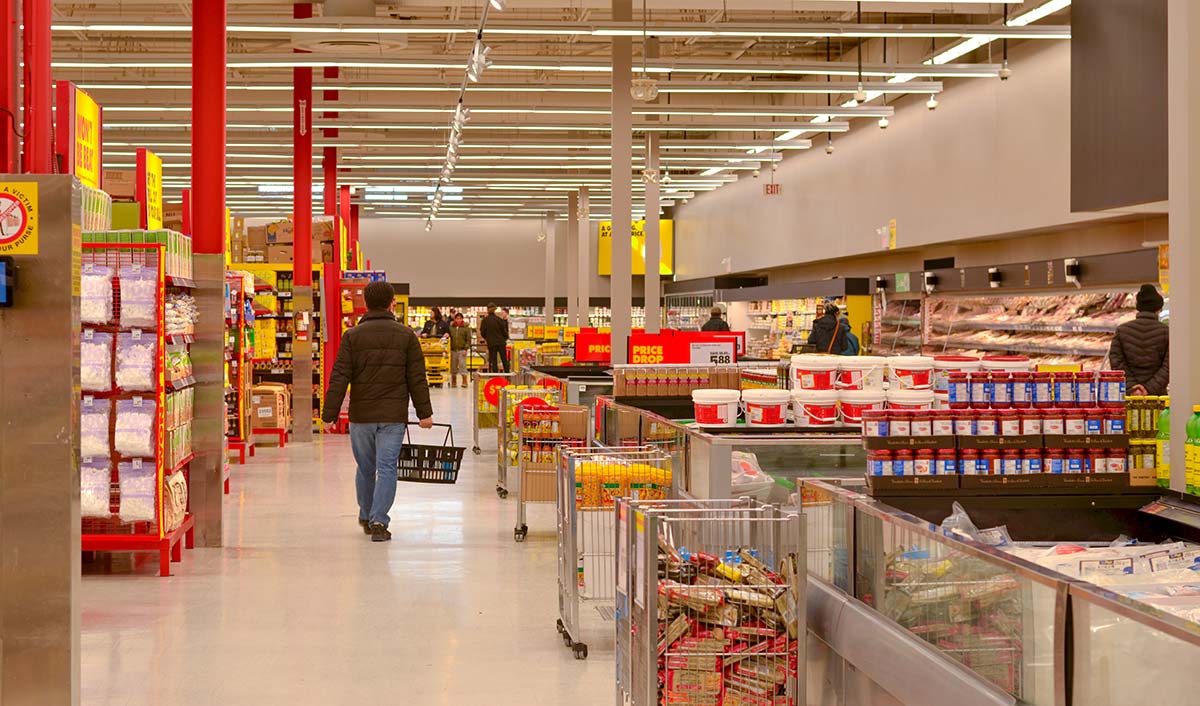Global FMCG Trends We Can Anticipate in 2023
- Jan. 27, 2023
- FMCG HORECA BUSINESS

Before discussing 2023, let's examine the performance of the global FMCG sector in 2022. According to Nielsen IQ, by the end of 2022, the FMCG industry would have had an 8-10% increase in growth over 2021.
The market is projected to increase by USD 310.5 billion between 2022 and 2026, while 'decelerating' at a CAGR of 2.27 percent throughout this time.
The market for consumer packaged goods was driven by the following trends in 2022.
Digitalization is no longer an alternative.
When the pandemic struck, one of the basic shifts that occurred was a shift in how customers acquired commodities. They were unwilling to wait in lengthy billing counter lineups. This necessitated that FMCG companies innovate and discover efficient methods to accomplish curbside pickups and be accessible through many channels where their customers are present.
In other words, FMCGs were compelled to digitise their operations and depend on technology in order to fulfill client demands, optimise operations, and enhance the efficiency of their processes. 73% of consumers prefer to shop over several channels, according to an HBR survey, and omni-channel customers earn 30% more income for firms, according to another study.
Important is personal value alignment
Prior to making a purchase, a growing number of buyers do research about the brand and the item. And there is a considerable increase in the number of clients who wish to purchase natural produce and sustainable, eco-friendly items.
According to a Google survey, 82% of consumers prefer to buy from a business that shares their beliefs. In fact, 39% of customers would abandon a brand they have been devoted to if there is a value mismatch, according to the report.
The focus is on health
Consumers are searching for nutritious and healthful items. When it comes to choosing good choices in food and food items, what goes into a product matters more and there is more concern for personal health and well-being.
Customers are still reluctant to pay high rates for organic, healthy food and lifestyle, despite the fact that there is a desire for such products. When it comes to the cost of a healthy lifestyle option, they have a clear sense of how much is too much.
What 2023 Holds for the FMCG Industry
An expert from Merit explains, "At Merit, we're seeing firsthand the advantages of integrating AI, data, automation, and digital transformation to create FMCG brands that give value to their consumers, while also satisfying the needs of their shareholders and other stakeholders.
As the macro climate changes – with inflation and a recession looming – FMCG firms will be required to leverage data and digital technology to drive change. The deciding factor will be quick decision-making supported by the correct data analytics."
Below is a list of further macro developments that may impact the FMCG industry's decision-making in 2023.
Healthy and Economic
As stated before, consumers will be cautious with their spending, thus companies will need to continue catering to customers' healthy lifestyle preferences while being inexpensive and competitive in order to continue meeting demand.
More advanced supply chains
Recently, we had written on the best practices that FMCG companies may do to optimize their supply chain processes. In 2023, more FMCG firms will choose to concentrate their optimization efforts on making the supply chain process more efficient, as the newest technology is ready to facilitate optimization.
This implies that companies will grow better at predicting, stocking, and managing products and supplies, which for end consumers means product availability when there is demand and a better grasp of what customers want and when they want it.
In the approaching year, optimizing supply chains will be crucial since companies will see an increase in input prices due to the depletion of natural resources, the replacement of old sales strategies with Internet-centric models, and labor shortages. In addition, they must identify cost-cutting strategies to guarantee that the prices of their final goods stay reasonable for customers who are already counting their coins.
The Chance Lies in Asian Markets
The future of FMCG rests in Asian markets such as China, Indonesia, and India, as is common knowledge and regularly discussed. Therefore, businesses must consider how they can meet the demands of their new audience. They must find product categories and markets that will allow them to penetrate the Asian market and achieve a competitive edge.
FMCG firms must compete with online retailers for shelf space.
This must be accomplished through discovering innovative methods to promote to customers across omni-channels and assuring visibility among a multitude of e-commerce firms that may have already secured a substantial portion of the market.
Therefore, firms must prepare for emerging trends such as video shopping, a larger variety of payment choices, and cross-border sales (purchasing from an international brand and having it shipped to their home country).
Consumers will remain the focal point of company choices.
Data will play a crucial part in maintaining customer brand loyalty. This tendency is unlikely to alter in the next year, despite the fact that many companies now depend on vast volumes of data and insights to inform business choices.
With inflation, a changing demographic population (towards a future with a greater proportion of an aging population compared to a younger population), and calculated consumer spending, businesses must be on the lookout for the factors that influence consumer spending and be prepared to cater to them.
In conclusion, the most significant changes between this year and the next are a greater dependence on new technologies and tools to promote greater process efficiency and an improved customer experience. Also, a higher dependence on digitalisation for every area of an FMCG company, from sourcing and supply chain to the retail experience of the end-customer, and a larger, more global market for brands to compete in, which may not be simple to accomplish.









